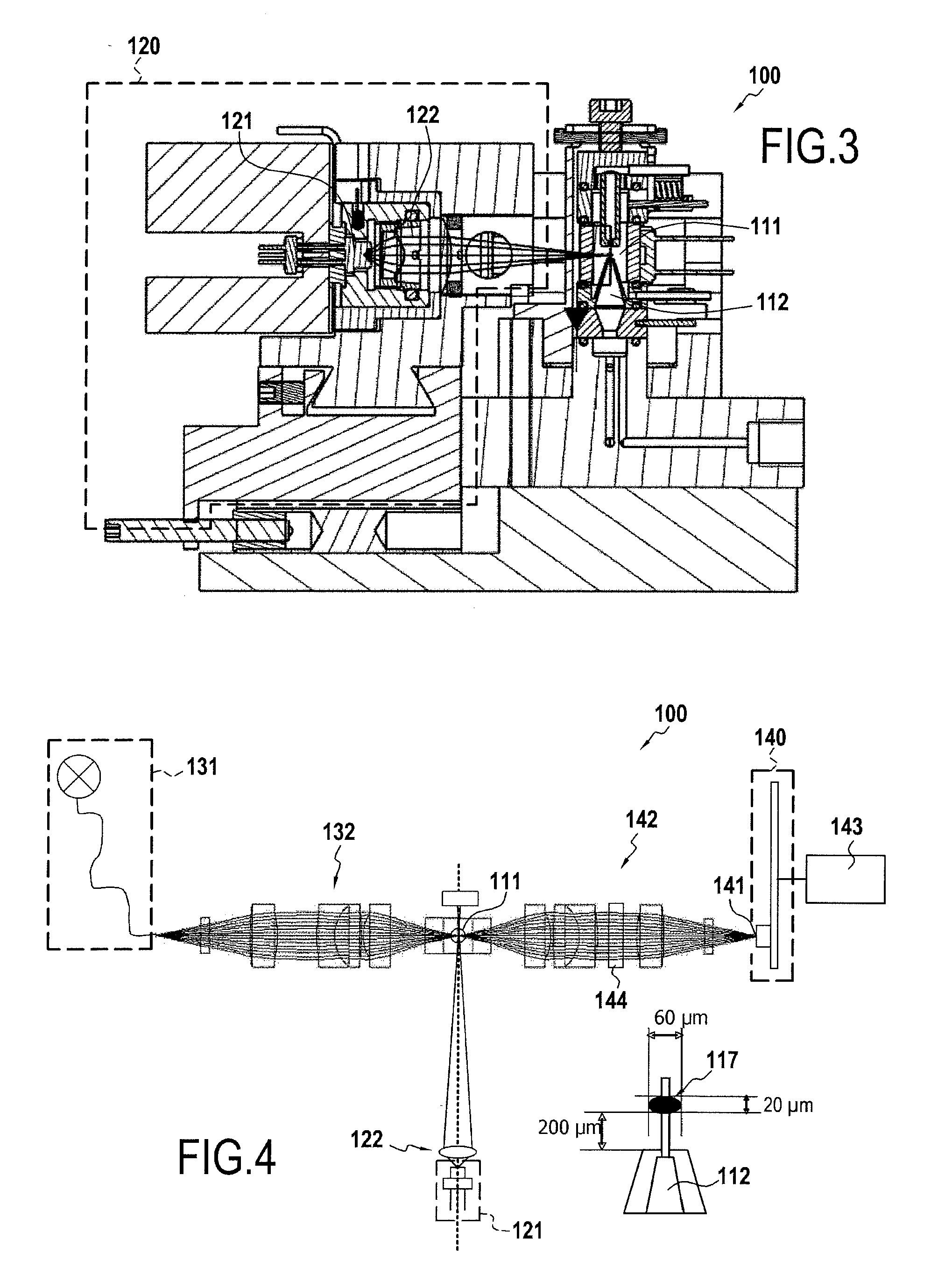Electrooptic measurement device and method intended for classifying and counting microscopic elements
a technology of electrooptic measurement and microscopic elements, applied in the field of biological analysis, can solve the problems of large hardware resources, relatively complex systems, and relatively complex electrooptic devices for measuring this fluorescence, and achieve the effect of simple and effective implementation of the invention and low cos
- Summary
- Abstract
- Description
- Claims
- Application Information
AI Technical Summary
Benefits of technology
Problems solved by technology
Method used
Image
Examples
Embodiment Construction
[0068]FIG. 1 is a perspective view of a preferred embodiment of a device 100 of the invention. This device 100 consists of four functional assemblies: an assembly 110 supporting the measurement tank, two assemblies 120 and 130 supporting light sources, and an assembly 140 supporting the light sensor. In the embodiment of the invention shown, the two assemblies 120 and 130 supporting the light sources are mutually perpendicular, one of the two facing the assembly 140 carrying the sensor.
[0069]FIG. 2 is a section of the device 100 on a plane XZ intersecting the measurement plane. The assembly 110 comprises a measuring tank 111 and a nozzle 112 discharging into the measuring tank 111 in order to generate therein the flow of fluid to be analyzed in accordance with the principles of flow cytometry. The assembly 130 comprises a light source 131 and optics 132 providing suitable illumination of the measurement tank.
[0070]The assembly 140 comprises a sensor 141 and optics 142 for appropriat...
PUM
 Login to View More
Login to View More Abstract
Description
Claims
Application Information
 Login to View More
Login to View More - R&D
- Intellectual Property
- Life Sciences
- Materials
- Tech Scout
- Unparalleled Data Quality
- Higher Quality Content
- 60% Fewer Hallucinations
Browse by: Latest US Patents, China's latest patents, Technical Efficacy Thesaurus, Application Domain, Technology Topic, Popular Technical Reports.
© 2025 PatSnap. All rights reserved.Legal|Privacy policy|Modern Slavery Act Transparency Statement|Sitemap|About US| Contact US: help@patsnap.com



